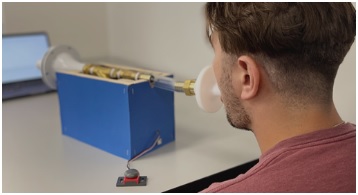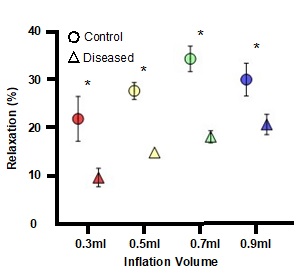New Device to Test for Pulmonary Function for 21st Century Care
Tech ID: 32913 / UC Case 2020-234-0
Background
Spirometry and Plethysmography are the primary methods to characterize pulmonary function for most lung diseases (such as COPD and asthma). However, these century-old measurement techniques present challenges in the modern healthcare environment: they are difficult and uncomfortable for patients to accurately self-administer, day-to-day tracking to monitor disease progression can be challenging due to measurement variations, and the amount of data is limited and only most evident for more severe pulmonary cases. New methods for characterizing lung function could be transformative for care delivery and patient outcomes.
Brief Description
Prof. Mona Eskandari, whose research is known for seminal strides in experimental characterization and computational modeling of lung structural mechanics using novel techniques developed in her lab, has discovered a new method for measuring pulmonary function. It works by analyzing the change in temporal pressure while a patient is holding their breath. The measurement device is simple, comfortable and error-free for the patient to self-administer. Algorithms are used to transform the detailed lung data collection into actionable metrics for early detection capabilities for medical intervention and prevention. The discovery could provide more accessible, detailed, timely, and actionable data on lung function compared to conventional and currently used methods.

Fig 1: The medical device prototype being tested in the laboratory

Fig 2: Preliminary data exhibiting detectable differences between several healthy and diseased mice lungs when utilizing the proposed new pulmonary function method
Application
- A new type of pulmonary function test that is quick, easy, and accurate for a patient to self-administer while providing greater insight for lung health than spirometry
Patent Status
| Country | Type | Number | Dated | Case |
| United States Of America | Published Application | 20230197262 | 06/22/2023 | 2020-234 |
Related Materials
- Quiros et al. 2022. “Mouse lung mechanical properties under varying inflation volumes and cycling frequencies.” Nature Scientific Reports, https://doi.org/10.1038/s41598-022-10417-3 - 05/02/2022
- Sattari et al. 2020. “Introducing a Custom-Designed Volume-Pressure Machine for Novel Measurements of Whole Lung Organ Viscoelasticity and Direct Comparisons between Positive- and Negative-Pressure Ventilation.” Frontiers in Bioengineering and Biotechnology, https://doi.org/10.3389/fbioe. 2020.578762. - 10/21/2020
Contact
- Grace Yee
- grace.yee@ucr.edu
- tel: View Phone Number.
Other Information
Keywords
pulmonary, pulmonary function test, PFT, lung disease, COPD, asthma, lung function, breath, spirometry, chronic obstructive pulmonary disease
